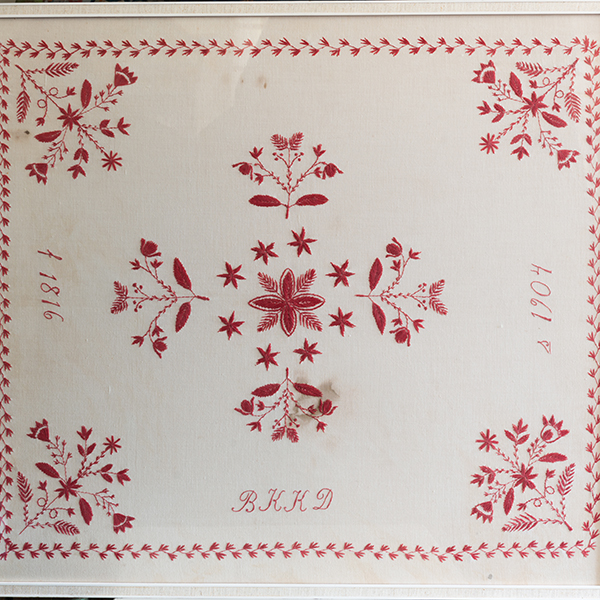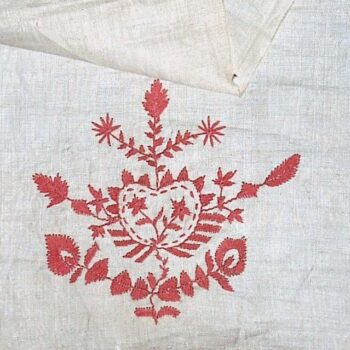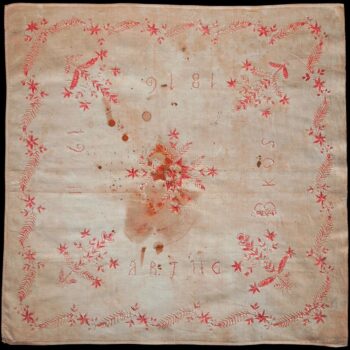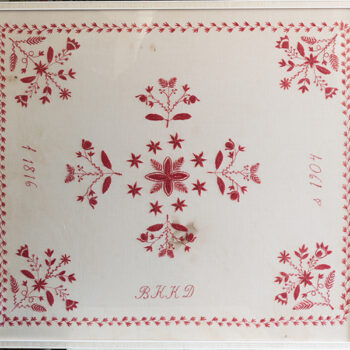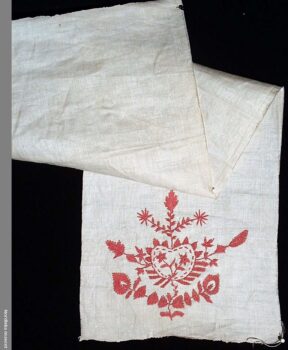Origin
During the rise of industrialisation in 19th century Sweden, a counter-movement to preserve rural culture and traditional craft techniques developed throughout the country. To promote the crafts, embroideries typical of each region were selected and named. In the region Ångermanland, there was still a rich, living craft tradition, but missing a distinct and unique style.
Brita Kajsa Karlsdotter from the village of Anundsjö was a stitcher who started her craft late in life but quickly developed a very particular style. Her work was discovered by the local craft consultants in a local exhibition 1910, and the style had what they were looking for – clean, minimal and not overly naturalistic – and was selected as the regional stitch for Ångermanland.
Curation of crafts and the branding thereof might seem like a novelty, but in reality has a long history in shaping craft heritage and style through generations.

